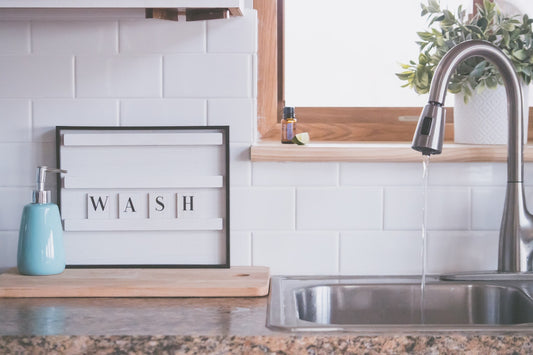With record temperatures reaching 120 degrees in some regions, the entire state of California is currently experiencing drought. In fact, even though California is regularly experiencing drought episodes and has lived with water scarcity over the years, this year’s drought has been deemed the worst the state has faced in decades and coined a megadrought.
In some areas like the San Joaquin Valley, the extreme climatic event is threatening the drinking supply for hundreds of residents. Farmers are also heavily impacted as their livelihood is also being threatened.
Therefore, Gov. Gavin Newsom recently asked residents to cut back on their water consumption by 15%. Water preservation is becoming critical as rural Californians scramble for freshwater.
In this post, we’ll summarize the current situation in California and highlight fifteen easy steps you can take to help preserve water.
The Californian Water Crisis
The Western part of the country is experiencing a megadrought. And California is particularly affected with destructive wildfires raging across the state on the heels of record heat waves.
Indeed, a dangerous vicious circle of heat, drought, and fire is currently at play putting tremendous strain on regional water reserves as they quickly evaporate. As a result, California’s two largest reservoirs, Lake Oroville and Lake Shasta are at critically record lows. This phenomenon is exacerbated by the effects of climate change, leading to lower snowfall, higher temperatures, higher evaporation and lower water reserves. Many communities depend on these reservoirs for their drinking water, and the shrinking water supply is putting strain on both families and farmers.
What’s more, California produces one-quarter of all food grown in the country, including 40% of the fruit. But with the current drought, the Bureau of Reclamation has drastically cut water allocation to farmers leading to significant crop, food, and job losses.
Another issue related to the drought is that overpumping groundwater has been shown to lead to elevated levels of arsenic, a toxic mineral in drinking water supplies in the Central Valley.
Why is the water crisis getting worse every year?
As climate change leads to higher temperatures, evaporation from the land, lakes, and rivers increases, making the land drier than usual. Forests and vegetation become kindling for mega-fires which, in turn, contributes to higher temperatures and higher water evaporation, fueling the water crisis.
15 Ways to Preserve Water
As the water supplies shrink and megadrought episodes increase, conserving water is becoming a priority to ensure drinking water is available for all.
Here are a few easy steps you can take to help conserve water.
- The average American shower lasts for 7.8 minutes and uses 15.7 gallons of water. So, to save water, take shorter showers and turn the tap off while lathering shampoo and soap.
- Use a low-flow showerhead and install high-efficiency bathroom faucets.
- Check and fix any leaks.
- When turning the tap on before your shower, use a bucket to collect the cold water before the water warms up. You can then use the cold water to water your plants.
- Use the water from your pasta or vegetable cooking to water your plants once it has cooled down.
- Turn the tap off while brushing your teeth, washing your face, or your hands. It might not seem like a lot, but you can actually save up to 30 gallons of water a day using this simple method.
- Scrape food scraps from your dishes into a compost bin instead of rinsing them off.
- Make sure your dishwasher or washing machine is full before running it.
- Use the cold setting when doing your laundry.
- Plant drought-tolerant plants and trees.
- Use mulch or biochar when planting your plants as this will prevent water evaporation.
- Water your plants and garden in the early hours of the morning to prevent evaporation.
- Clean your driveway or patio with a broom instead of using water from a hose.
- Take your car to an automatic car wash that recycles water and refrain from washing your car at home.
- Download the Flume app to monitor your water usage.
By tweaking your routine and implementing these simple practices, you’ll not only save water, but you’ll also save on your water bill ;)
Water Filters Can Help you Save Water Too
Another way to save water that is rarely mentioned is investing in a water filter. Indeed, filters can purify your water and remove contaminants such as hard water, helping you conserve it.
Hard water refers to water containing high levels of minerals such as calcium, iron, and magnesium. When hard water runs through your appliances, these minerals start forming scale buildup in your pipes and appliances which can rapidly decrease their efficiency.
Using a water filtration system in your home can therefore increase the efficiency of your water-related appliances by up to 48%, thus significantly decreasing the amount of water needed to wash your clothes or dishes.
If you’re looking for a water-efficient filtration system that will provide you with pure drinking water while conserving it, our salt-free softeners might be the solution. They don’t require back flushing with fresh water and have been designed to avoid water wastage.
Don’t hesitate to contact us if you need more information!






